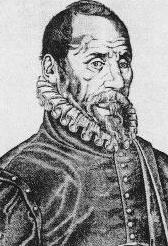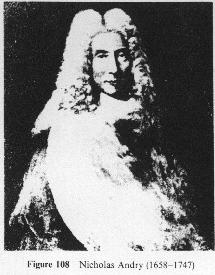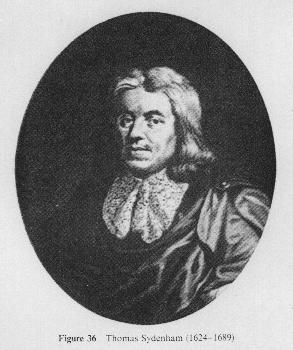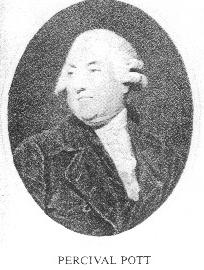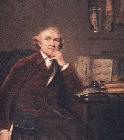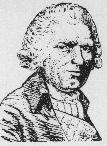THE HISTORY OF ORTHOPAEDICS
Orthopaedics, like many specialties, has developed through a necessity. A necessity to correct deformity, restore function and alleviate pain. Orthopaedic surgeons have developed an ability to prevent major losses of bodily function and indeed they can prevent otherwise inevitable death. They seek perfection of their art, by ensuring that the patient reaches optimal condition in the shortest period of time by the safest possible method.
History is very important to any surgeon, particularly the Orthopaedic surgeon. The Orthopaedic surgeon has once again been presented with advancing technology. This technology must be applied to the surgeon's practice, but it is best applied only when the surgeon has an underlying knowledge of the history of his art. He must be aware of the way surgeons in the past have contributed to Orthopaedics and more importantly, of the mistakes but they have made in the process. The surgeon who makes a mistake that was made by someone before him, is surely humbled and seen as poorly educated. So is he who states that he has developed a technique that no one has thought of before, because chances are that it has been thought of in the past.
In order for Orthopaedics to advance in an optimal manner, it is clear that attention must be paid to a history of Orthopaedics. The past is our foundation for future developments, we must build upon it so that we too can act as a stable foundation for future generations.
Although we have no written historical accounts, primitive man provides us his fossils. These show that the same pathology affecting bone existed in primitive times, hence an environmental cause for many of our common ailments seems unlikely. Evidence of fractured bones has been found, in some of which union has occurred in very fair alignment. This is interesting to note, as it gives us an ethical manner in which we can see the effects of no treatment at all, i.e. applying rest by instinct and early motion. It is inevitable that, at some stage, primitive man created a very crude splint, and that from that stage on, its advantages were recognised. Primitive man was probably also the first to perform crude amputations of limbs and fingers, and to trephine the skull.
Mummified bodies, wall paintings and hieroglyphics, have shown us that the people of the Egyptian age suffered from the same problems that we suffer today. They also show us some of the orthopaedic practices of that time. Splints have been found on mummies and they were made of bamboo, reeds, wood or bark, padded with linen. There is also evidence of the use of crutches, with the earliest known record of the use of a crutch coming from a carving made in 2830 BC on the entrance of a portal on Hirkouf's tomb.
Perhaps the most important source describing the practices of the Ancient Egyptians comes from a papyrus, which was stolen from a tomb in 1862. The papyrus was then sold to an American Egyptologist by the name of Edwin Smith and so is sometimes known as the Edwin Smith papyrus. The author is not known, but believed to be Imhotep. Imhotep was seen as a genius of his time. He was a physician, an architect, an astrologer, and a chief minister and there is no knowing in Egypt and Greece, with some evidence that he received this status only 100 years after his death.
In the papyrus, the examination of peripheral was described together with an understanding that pulses reflected the action of the heart from which vessels went to the limbs. In this papyrus, injuries were classified according to their prognosis into three categories: an ailment which they would treat, an ailment that they would contend and an ailment which they would not treat. The papyrus also mentioned many cases and the treatment involved. These include, reducing a dislocated mandible, the signs of spinal injuries, and the signs of torticollis, the treatment of a fractured clavicle as well as signs and treatment of other fractures. Discharge was referred to as "ryt", this is presumably the pus of osteomyelitis.
Many principles behind conditions and their treatment have been attributed to the Ancient Greeks. They could be regarded as the first to use a scientific approach, however they were also the first to document in detail their history and developments. Homer alone, in his account of the Trojan war, has provided us with an adequate insight to the understanding of injuries at that time and the treatment used for those injuries. The Iliad also contains references to various deformities. The Greek anatomists of Alexandria, during the 3rd century BC were also great contributors. Herophilus, who is believed to have practised human dissection, is regarded as the first to divide nerves into sensory and motor components and also the first to distinguish arteries from veins. Hegetor also of Alexandria, but of 100 BC, described in detail the anatomical relations of the hip joint, and was the first to record a description of the ligamentum teres.
In the period between 430 and 330 BC a very important Greek text was collated and is known as the Corpus Hippocrates. It is named after Hippocrates who is known as the father of Medicine. Hippocrates was born on the island of Cos in 460 BC and died at an old age in 370 BC. He is known as having brought a systematic and scientific approach to Medicine and as having defined for the first time the position and the role of a doctor in society. Although centuries have passed, the Hippocratic oath will always remain central to our practices.
Various volumes in the Corpus Hippocrates had relevance to Orthopaedics. One such volume is the one on joints. Here dislocation of the shoulder was described together with the various methods used in reduction. There were also sections describing the reduction of acromioclavicular, temporomandibular, knee, and hip and elbow joint dislocations. The correction of club foot was described. The problem of infection after compound fractures was described and treated with pitch cerate and wine compresses without forcible bandaging. Probing into any compound fracture was avoided.
Hippocrates had a thorough understanding of fractures. He knew of the principles of traction and counter-traction. He developed special splints for fractures of the tibia, similar to external fixation. Hippocrates also developed the Hippocratic bench or "scamnum". Of all the developments that Hippocrates has given to us, his careful clinical observation and rationale thinking must be particularly commended.
Although the teachings of Hippocrates were to dominate thinking for many centuries after his death, there are several contributors to Orthopaedics worthy of mention. During the Roman era, there was another respected Greek figure by the name of Galen (129-199 BC). He was originally from Pergamon and became a gladiatorial surgeon there before travelling to Rome. Galen is often referred to as "the father of sports medicine". He gave a good account of the skeleton and the muscles that move it. In particular, the way that signals are given from the brain through the nerves and to the muscles. He first recorded a case of cervical ribs. He described bone destruction, sequestration and regeneration in osteomyelitis and sometimes performed resection in such cases. Galen is believed to be the first to have used the Greek words, kyphosis, lordosis and scoliosis for the deformities described in the Hippocratic texts. He also devised several methods for correcting these deformities.
During this Graeco-Roman period, there were also attempts to provide artificial prostheses. There are accounts of wooden legs, iron hands and artificial feet. Soranus of Ephesus is said to have first described rickets. Ruphus of Ephesus described tendon ganglia and their treatment by compression. Antyllus of the 3rd century is said to have practised subcutaneous tenotomy to relieve contractions around a joint. It is said that he used both linen and catgut sutures for thee procedures. Various drills, saws and chisels were also developed during this period.
THE ARAB ERA.
Another Greek named Paul of Aegina (625-690 A.D.) worked in Alexandria and wrote "The Epitome of Medicine" which consisted of seven books based on the Hippocratic texts. The sixth book dealt with fractures and dislocations. With the invasion of Alexandria by the Moslems, many great books such as these were taken and translated into the Arab language. The great library of Alexandria was burnt. Although the Arab practices were regarded as an extension of those of the Greeks, the use of plaster-of Paris in the l0th century was significant. With the addition of water to a powder of anhydrous calcium sulphate a hard crystalline material was produced. A Persian by the name of Abu Mansur Muwaffak described the coating of plaster for fractures and other bony injuries of the limb.
